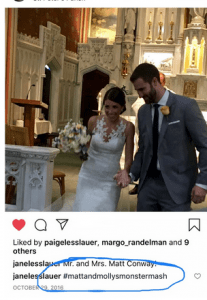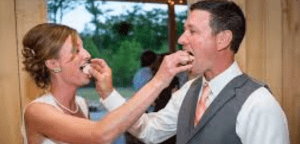Title: Gemma Bautista
General Information about Item:
- Student
- Varsity Field Hockey Team
- English
- Brisbane, Australia
- May 13, 2019
Part 1
Text:
This pre-performance folklore is a form of chanting. The “chant” is a secret that cannot be spread outside of the team. As I member of the team, I know the chant as well but have promised not to write it down or pass it outside of the team. It is entirely in English however, so there would be no need to phonetically spell or transcribe the words. The music and lights are off and everyone is in a circle with their arms around each other. The chant begins with the team members on their knees crouched on the floor. One senior member of the team will begin whispering a secret phrase that everyone will then repeat. As the phrase is repeated the team will slowly begin to rise and start speaking louder and faster. After many iterations of the phrase the team will be jumping up and down and screaming the phrase as loud as they can. At this point, the senior member will yell “UP UP BIG GREEN ON THREE… 1, 2, 3” and the team will finish the chant with a loud collective cheer.
Context:
Gemma first learned about this pre-performance folklore during her freshman year at Dartmouth. She learned about it before the first competition of the season in the locker room. The chanting was passed down and taught to Gemma by the senior girls on the team. She does not know which teammate started it or what year it began. The hockey team has existed at Dartmouth since 1972, and many of our alums have mentioned performing chants when they come back for our big homecoming competition. It is possible that this ritual is decades old. The specific chant is not necessarily the same, which could mean there are multiple existences and variations of this ritual. To her knowledge, it is not written or recorded anywhere and is only performed orally by the team before home competitions. It has been and continues to be a major part of our team culture.
Gemma usually performs this ritual in the locker room of the Dartmouth Field Hockey Team. This locker room is located down the street from our field, alongside the Boss Tennis center on 6 Summer Ct, Hanover, NH 03755. Gemma and her teammates perform this ritual exactly one hour before the start of the game. This ritual is performed in the locker room before the start of every home competition. The girls on the team finish dressing in their uniforms and putting on their equipment. Before walking out to the field, a member of the team will gather everyone in the room into a circle and everyone will join arms. The music is turned off and the lights are turned off.
Meaning and Interpretation (Informant): “I think this means that I am an important player on a team of close friends. I am putting on a uniform for the many generations of women who came before me and shaped the team into what it is today. The same team that has always performed this is the team that chose me and gave me the opportunity to come to the United States to study. I think this performance is a way to feed off of other teammates energy and get excited to compete. The secrecy of the chant and the way it builds from a whisper to a scream is unique and something I will remember forever.
Part 2
Text:
When she is in Australia, she does have one ritual that she thinks could be considered folklore. In other countries, field hockey is also considered to be a men’s sport. Her dad grew up playing the sport and taught her how to play. Before he would play in competitions, he would re-tape the grip of his stick (the top part.) He taught Gemma the best method to tape the stick and she continues to do this in her Women’s League competitions. She does not perform this ritual in the United States because she has less free time before the games. It may be a ritual, because it was passed to her orally and her father never recorded or wrote down the method but instead taught her by example. He said he learned the method from his coach in the Philippines, but does not know where that coach learned it. There are multiple ways and patterns to re-tape a stick that many coaches and players have likely passed down, so this could be an example of multiple existence or variation. She said her father does not remember how he first learned the taping pattern and if it was orally passed to him by a teammate or coach. It is an unofficial part of her family’s culture and how they prepare to perform on the field.
Context:
In her native country, the pre-performance rituals are a lot less cohesive due to the nature of the team. College sports are not as popular or competitive as they are in the United States, and field hockey is played outside of the University level. You can sign up to play in a league that is independent of a University. Instead of playing with specifically recruited 18-22 year olds that you practice with every day, you may be playing with a random assortment of players. Any women’s team could have a wide array of females ranging in age, experience, etc depending on who signs up and where they are playing. She could be playing with a 45-year-old who’s been playing for 30 years or a 16-year-old who has just entered the women’s league. Therefore, there is a lot less focus on group cohesion and more focus on tactical skills and strategies needed to win the game.
The rituals tend to thus be more individualized and up to her to develop. They do not gather together in the locker room and address each other as a team. She explained that many of the rituals that are performed in Australian Women’s leagues would likely not be considered folklore, because many are authored/created by the players themselves.
Meaning and Interpretation (Informant): For me, the Australian ritual is meaningful because it is something my father taught her and something I want to be a family tradition. I want my kids to play hockey so this would be a fun thing to share with them. I think it is a technique to focus and improve my performance by preparing the best equipment possible for me to play with. It is significant because I do it before every game in Australia and it reminds me that I’m playing at home with a different set of players of all ages and skills. I likes that I have different rituals for each setting that I play in, because it makes each playing experience unique and competitive for me.
Parts 1 and 2 Together
Meaning and Interpretation (Collector):
I think that the United States ritual of chanting represents a law of similarity. The speed and volume of the chant starting very low and slow and ending very loud and fast parallels the building of energy and optimization of performance the team wants to have. The players are d increasing intensity during the ritual, and this could result in increasing intensity before the performance. This ritual is oral, it has not been written down or recorded, it was transmitted by word of mouth to the underclassmen, the movements in it were taught by example, the author is irrelevant, and it is definitely a part of our team culture. It could be a ritual because players are separating from their everyday selves and using the chant to transition into an intense game-like state and incorporate into the intense pre-competition stage. The Australian performance folklore may be magic superstition. She may go to the field to play without a taped stick, and she will only perform well if she retapes the stick. If she It was orally passed down/shown to her by her father, the author is irrelevant as it was passed from coach to player to coach etc. in the Philippines, and it has become a part of their family culture. She does not perform this folklore in the US, almost like it would be bad luck.
I think the American ones are more team-based and passed down from older teammates to younger ones. It is a collective performance that bonds, focuses, and energizes every member of the team before a competition. The Australian rituals are much more individualized and are typically passed down from each family member or coach rather than each teammate. In Gemma’s case specifically, her pre-performance ritual in Australia is the physical performance of stick taping rather than the spoken performance of chanting. She thinks her performance ritual in Australia calms her down and focuses her mind more, whereas her performance ritual in America hypes her up and excites her to play more. They are rather different, but both of them get her ready to compete. I think it is important for her to have two separate performance plans based on folklore in her life for two separate mindsets and experiences of competition.
Collector’s Name: Katie Persin
Tags/Keywords:
- Sports
- Athletics
- Field Hockey
- Pre-performance ritual
- Chanting
- Stick-taping



